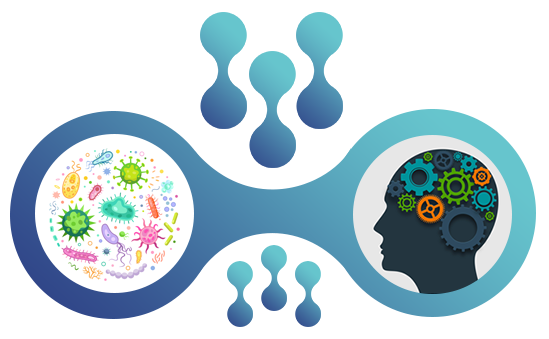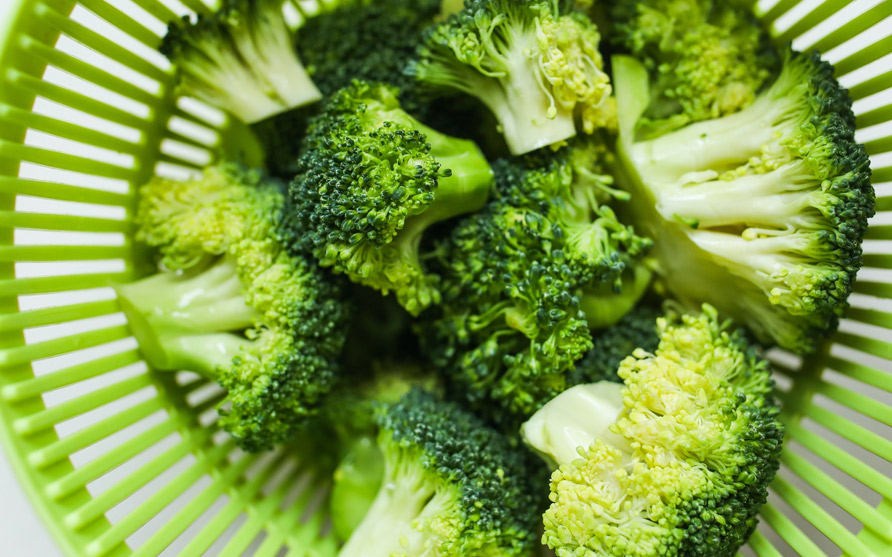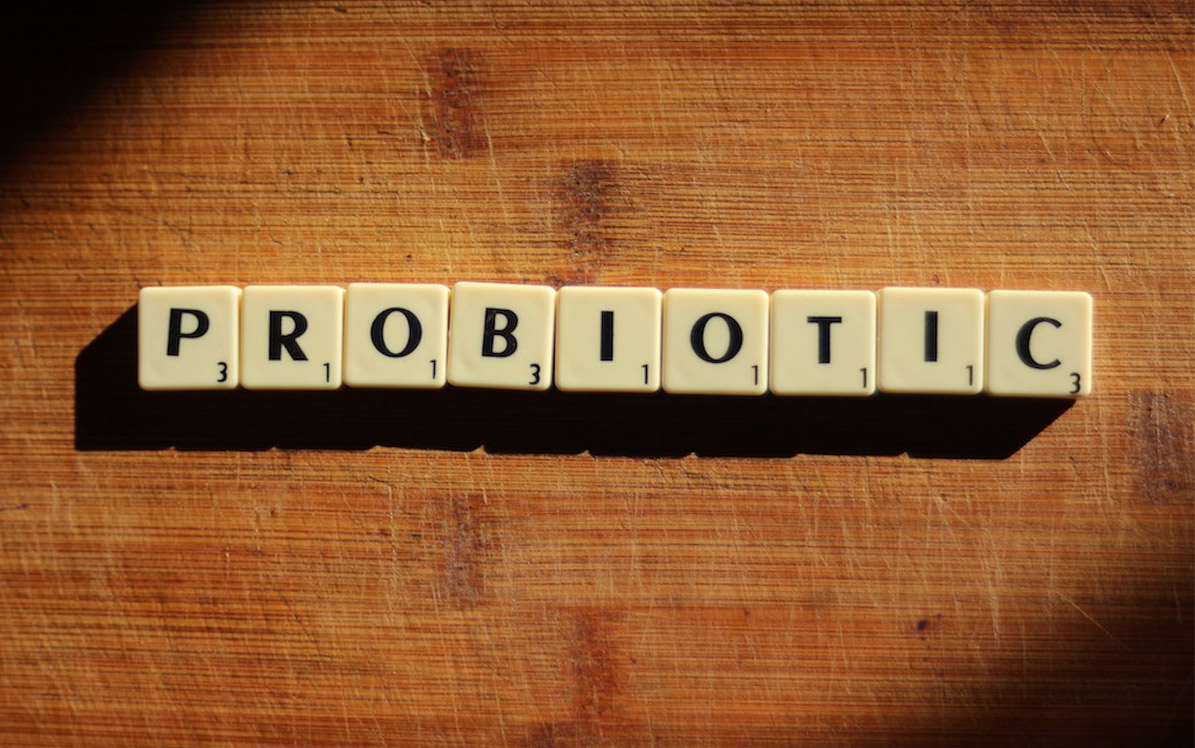Microbiome Wellness
From early life to adulthood, the microbiota plays a crucial role in the health of the infant and later in adulthood. The microbiota in early life are not only a key regulator of infant health but also associated with long-term health.

Good gut health is vital for proper nutrition. If your gut is not working correctly, you cannot absorb the nutrients you need from your food. The lining of your gut needs to be at the optimal thickness for absorbing nutrients. This means that the cells making up that lining need to be dividing and multiplying at the correct rate. These cells need to have sufficient fuel to function correctly; otherwise, the intestines’ lining does not absorb nutrients as effectively as it should. The lining of the gut and the gut microbiome also produce vitamins, which your body can absorb. Nutrients produced in the gut to include vitamin K and many B vitamins.
Emerging research on the pediatric microbiome implicates the importance of the microbiome on the development of the immune system, nervous system, and growth. Changes to the microbiome during pregnancy and infancy of the child are associated with the development of chronic illnesses later in life.
Additionally, the microbiome provides protection against certain pathogens, affects vaccine responses, and alters drug metabolism. The establishment of a healthy microbiome and the significance that changes to the microbiome composition have on growth and health, begins in childhood.
The Gut Microbiome and Mental Health
The gut microbiome has the potential to become a therapeutic target for improving mental health and brain wellness. Trillions of bacteria reside in the human gut and have been shown to play a crucial role in gut-brain communication through an influence on neural, immune, and endocrine pathways.
Individuals with various mental health disorders including depression, bipolar disorder, schizophrenia, and autism spectrum disorder have been shown to have significant differences in the composition of their gut microbiome. Enhancing beneficial bacteria in the gut, for example, through the increased consumption of prebiotic fiber, whole organic foods, increased Omega 3 fatty acid consumption, and a wider variety of foods consumed, has the potential to improve mood and reduce anxiety in children and adults.

What is the microbiome?
The microbiome consists of trillions of microorganisms called microbiota, consisting of thousands of different species of microbes. These include not only bacteria but fungi, parasites, and viruses. In a healthy person, these "bugs" coexist peacefully, with the largest numbers found in the small and large intestines but also throughout the body. The microbiome can even be considered an organ because it plays so many important roles in promoting the health of the human body.
Each person has an entirely unique network of microbiota that is originally determined by one's DNA. A person is first exposed to microorganisms as an infant, during delivery in the birth canal and through the mother's breast milk. Exactly which microorganisms the infant is exposed to depends solely on the species found in the mother. Later in life, environmental exposures and diet can change one's microbiome to be either beneficial to health or place one at greater risk for disease.
In a healthy body, pathogenic and symbiotic microbiota coexist without problems. But if there is a disturbance in that balance-brought on by infectious illnesses, certain diets, or the prolonged use of antibiotics or other bacteria-destroying medications—dysbiosis occurs, stopping these normal interactions. As a result, the body may become more susceptible to disease.
How microbiota benefits the body
A healthy microbiota stimulates the immune system, breaking down potentially toxic food compounds, and synthesizing certain vitamins and amino acids, including the B vitamins and vitamin K. For example, the key enzymes needed to form vitamin B12 are only found in bacteria, not in plants and animals.
Sugars like table sugar and lactose (milk sugar) are quickly absorbed in the upper part of the small intestine, but more complex carbohydrates like starches and fibers are not as easily digested and may travel lower to the large intestine. There, the microbiota helps to break down these compounds with their digestive enzymes.


The fermentation of indigestible fibers causes the production of short chain fatty acids (SCFA) that can be used by the body as a nutrient source but also play an important role in muscle function and possibly the prevention of chronic diseases, including certain cancers and bowel disorders. Clinical studies have shown that SCFA may be useful in the treatment of ulcerative colitis, Crohn's disease, and antibiotic-associated diarrhea.
The microbiota of a healthy person will also provide potential protection from pathogenic organisms that enter the body such as through drinking or eating contaminated water or food.
Diet and Microbiota
In addition to family genes, environment, and medication use, diet plays a large role in determining what kinds of microbiota live in the colon. These factors create a unique microbiome from person to person. A diet high in a variety of plant fibers affects the diversity of microbes in the intestines in a very positive way.
Dietary fiber can only be broken down and fermented by enzymes from microbiota living in the colon. Short chain fatty acids are released as a result of fermentation. This lowers the pH of the colon, which in turn determines the type of microbiota present that would survive in this acidic environment. The lower pH limits the growth of some harmful bacteria. Growing research on short chain fatty acids explores their wide-ranging effects on health, including stimulating immune cell activity and maintaining normal blood levels of glucose and cholesterol.
Foods that support increased levels of short chain fatty acids are indigestible carbohydrates and fibers such as inulin, resistant starches, gums, pectins, and fructooligosaccharides. These fibers are sometimes called prebiotics because they feed our beneficial microbiota.
Although there are supplements containing prebiotic fibers, consuming foods naturally containing prebiotics is preferred. The highest amounts are found in raw garlic, onions, leeks, asparagus, Jerusalem artichokes, dandelion greens, bananas, and seaweed.
In general, fruits, vegetables, beans, mushrooms (fungi) and whole grains like oats, and barley are all good sources of prebiotic fibers.
Be aware that a high intake of prebiotic foods, especially if introduced suddenly, can increase gas production (flatulence) and bloating. Individuals with gastrointestinal sensitivities such as irritable bowel syndrome should introduce these foods in small amounts to first assess tolerance. With continued use, tolerance may improve with fewer side effects.
If one does not have food sensitivities, it is important to gradually implement a high-fiber diet because a low-fiber diet may not only reduce the amount of beneficial microbiota but increase the growth of pathogenic bacteria that thrive in a lower acidic environment.
Probiotic foods contain beneficial live microbiota that may further alter one's microbiome. These include fermented foods like kefir, yogurt with live active cultures, pickled vegetables, tempeh, kombucha tea, kimchi, miso, and sauerkraut.
Harvard T.H. Chan School of Public Health
Improving the Health of Your Microbiome

1.Eat vegetables!
Leafy green vegetables are loaded with prebiotic fiber, which cannot be digested by people but are consumed by the good bacteria in your gut. It has been observed that people who follow a diet rich with fruits and vegetables are less likely to grow disease-causing bacteria.
Some great examples of vegetables that feed your microbes are:
- Leeks
- Broccoli
- Artichokes
- Lentils
- Carrots
- Onions
- Spinach
- Green peas
- Beans
- Cauliflower
- Jerusalem artichokes
- Dandelion greens
- Bananas
- Seaweed
Influence of Diet on the Gut Microbiome and Implications for Human Health https://www.ncbi.nlm.nih.gov/pmc/articles/PMC5385025/
2.Reduce refined sugar and avoid processed foods
Fast digesting sugars, otherwise known as Monnosaccarides, are digested so quickly that microbes, in your gut, don't get a chance to consume them! If you eat too many simple sugars, you run the risk of literally starving your microbiome to death.
Additionally, hungry microbes will resort to munching away at the lining in your intestine, which can lead to inflammation. Altering your diet to include more foods with complex sugars, ensure a happy and healthy microbiome. Here's a list of some sweet foods that will keep your gut healthy!
- Whole fruits
- Cacao (dark chocolate)
Also make sure you keep an eye out for dreaded hidden sources of monosaccharides. Sugar can sneak into foods you would never expect. Keep an eye on sugar levels in things like smoothies, nut butters, protein bars, salad dressings and even yogurt!
Sugar and Disease
Consumption of added sugars has been implicated in increased risk of a variety of chronic diseases including obesity, cardiovascular disease, diabetes and non-alcoholic fatty liver disease (NAFLD) as well as cognitive decline and even some cancers.
Relationship between Added Sugars Consumption and Chronic Disease Risk Factors: Current Understanding

3.Probiotics
Probiotics from live foods are chock-full of live bacteria that will help ensure your gut is populated by mostly the good types of microbes. You can get good probiotics from grass-fed yogurt, kefir, and bone marrow vegetable soup.
The International Scientific Association for Probiotics and Prebiotics (ISAPP) Consensus Statement on Fermented Foods https://www.ncbi.nlm.nih.gov/pmc/articles/PMC7925329/
4.Prebiotics
Prebiotics are food for your microbiome! It's important to feed the bacteria that live in your gut with clean, organic, high-fiber food sources that give your body the energy they need to complete the very important task of managing your enteric nervous system.
Here is a list of dietary prebiotics that should be staples in your home kitchen:
- Whole fruits
- Vegetables
- Mushrooms
- Oats
- Nuts and Seeds (no peanuts!)
Prebiotics: Definition, Types, Sources, Mechanisms, and Clinical Applications
https://www.ncbi.nlm.nih.gov/pmc/articles/PMC6463098/

5.Fermented Foods
Fermented foods are another great source of probiotics. Yogurt is very popular, however, if you're going to be eating a lot of yogurt, make sure that it is sugar-free! There are several other options that are a great source of good bacteria. Kombucha is becoming a very popular source of probiotics. You can also eat pickles, kimchee, and kefir, to ensure that you're getting enough live cultures to keep your gut healthy and happy.

6.Cut Out Processed Red Meat
Cut out all processed red meat with antibiotics and hormones and move toward grass-fed, organic-certified animal protein. There are ample studies that show healthier microbiomes in people who consume a higher plant-based diet. A vegetarian's gut, for example, will have a significantly smaller number of disease-causing bacteria than an omnivore's gut.
Red and Processed Meat and Mortality in a Low Meat Intake Population
https://www.ncbi.nlm.nih.gov/pmc/articles/PMC6470727/
7.Sleep
Getting enough rest is so important! Studies have shown that people with erratic sleeping patterns run the risk of disrupting their microbiome and the risk of developing inflammatory diseases. Try to get at least eight hours of sleep a night.
Insufficient sleep is associated with a range of negative health and social outcomes, including an adverse performance at school and in the labor market. Reduced sleep duration has been linked to 7 of the 15 leading causes of death in the U.S., including cardiovascular disease, malignant neoplasm, cerebrovascular disease, accidents, diabetes, septicemia, and hypertension
The Global Problem of Insufficient Sleep and Its Serious Public Health Implications
https://www.ncbi.nlm.nih.gov/pmc/articles/PMC6473877/


8.Start Walking
Your microbes feel that if they're working hard to keep you healthy, then you should be working hard too! The microbiomes of physically active people are healthier and more diverse. One of the best ways to de-stress after a long day simply take a walk. Just walking for 30 minutes a day could really impact your gut health, and help the microbes continue to make sure that your stress levels are managed and your mental health stays intact.
Regular walking may help improve cholesterol profile, help control hypertension, and slow the process of osteoporosis. Recent physiological studies have demonstrated that brisk walking provides strenuous enough exercise for cardiovascular training in most adults.
Collectively, the available data strongly support that, in addition to other well-known internal and external factors, exercise appears to be an environmental factor that can determine changes in the qualitative and quantitative gut microbial composition with possible benefits for the host. In fact, stable and enriched microflora diversity is indispensable to the homeostasis and normal gut physiology contributing also to suitable signaling along the brain-gut axis and to the healthy status of the individual.
Exercise Modifies the Gut Microbiota with Positive Health Effects
https://www.ncbi.nlm.nih.gov/pmc/articles/PMC5357536/
9.Make time for you!
Say 'no' more often. Explore meditation, mindfulness, yoga, or tai. Establishing balance in your life will support your mental and emotional health and optimize your gut and overall health. Stress can negatively affect your microbiome and you need a healthy microbiome to help manage your stress levels. If you're not careful, and you may get caught in an unhealthy cycle if you do not give yourself time to re-energize.

